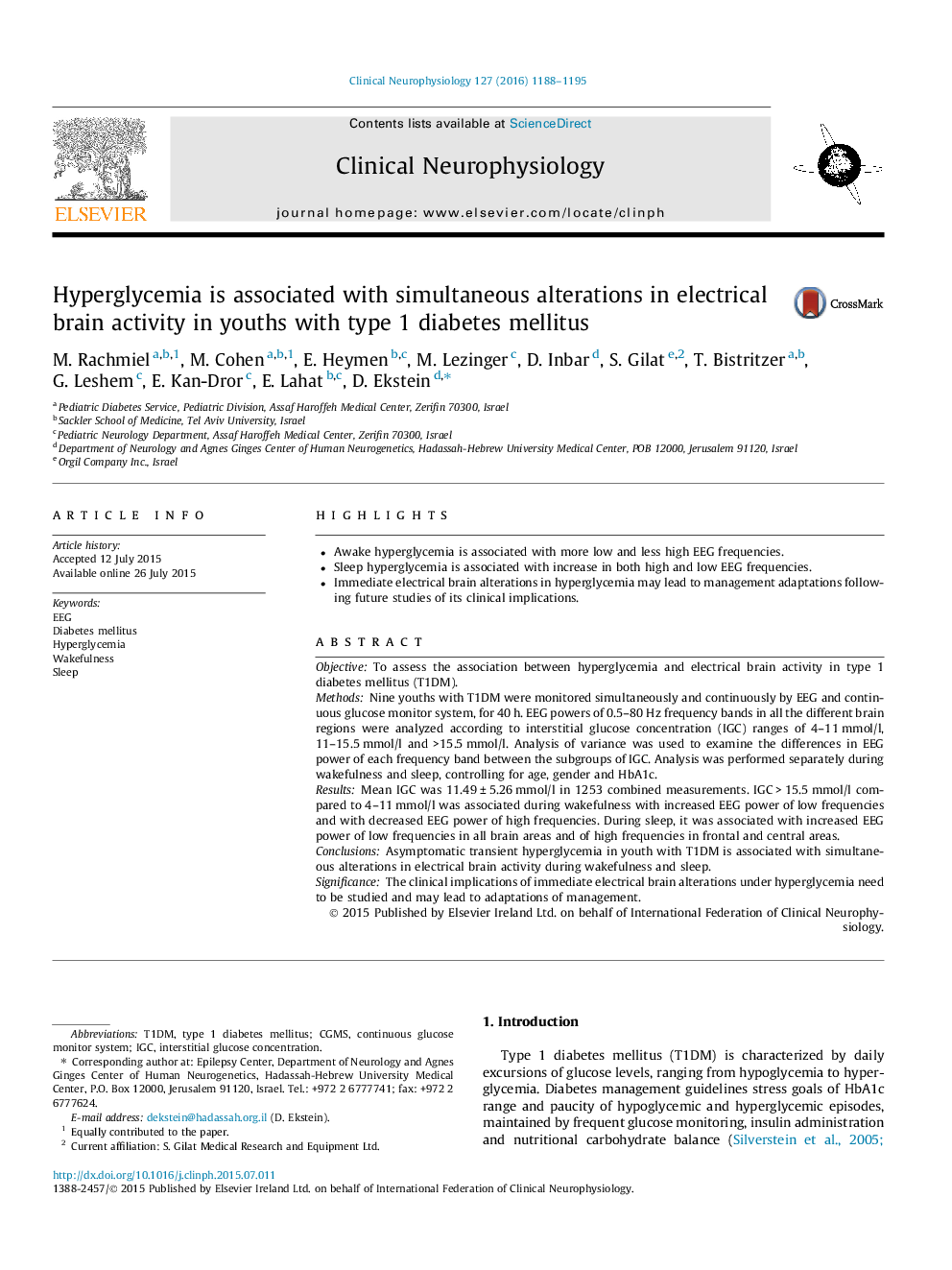| Article ID | Journal | Published Year | Pages | File Type |
|---|---|---|---|---|
| 6007550 | Clinical Neurophysiology | 2016 | 8 Pages |
â¢Awake hyperglycemia is associated with more low and less high EEG frequencies.â¢Sleep hyperglycemia is associated with increase in both high and low EEG frequencies.â¢Immediate electrical brain alterations in hyperglycemia may lead to management adaptations following future studies of its clinical implications.
ObjectiveTo assess the association between hyperglycemia and electrical brain activity in type 1 diabetes mellitus (T1DM).MethodsNine youths with T1DM were monitored simultaneously and continuously by EEG and continuous glucose monitor system, for 40 h. EEG powers of 0.5-80 Hz frequency bands in all the different brain regions were analyzed according to interstitial glucose concentration (IGC) ranges of 4-11 mmol/l, 11-15.5 mmol/l and >15.5 mmol/l. Analysis of variance was used to examine the differences in EEG power of each frequency band between the subgroups of IGC. Analysis was performed separately during wakefulness and sleep, controlling for age, gender and HbA1c.ResultsMean IGC was 11.49 ± 5.26 mmol/l in 1253 combined measurements. IGC > 15.5 mmol/l compared to 4-11 mmol/l was associated during wakefulness with increased EEG power of low frequencies and with decreased EEG power of high frequencies. During sleep, it was associated with increased EEG power of low frequencies in all brain areas and of high frequencies in frontal and central areas.ConclusionsAsymptomatic transient hyperglycemia in youth with T1DM is associated with simultaneous alterations in electrical brain activity during wakefulness and sleep.SignificanceThe clinical implications of immediate electrical brain alterations under hyperglycemia need to be studied and may lead to adaptations of management.
